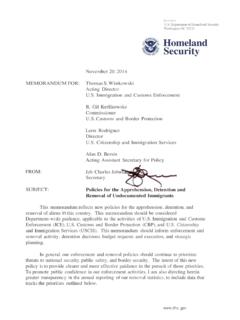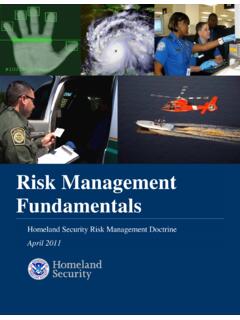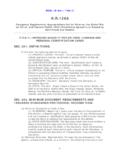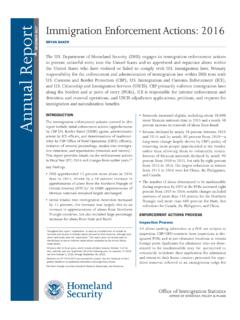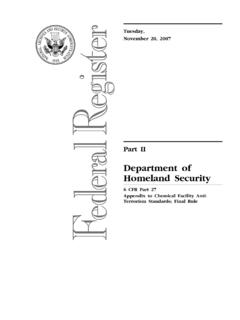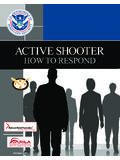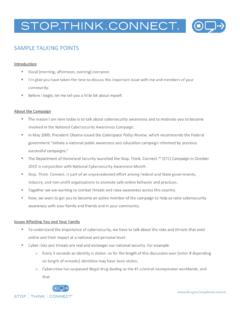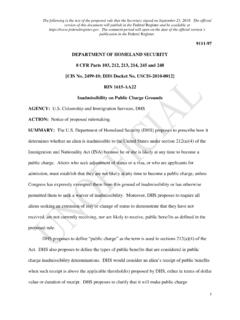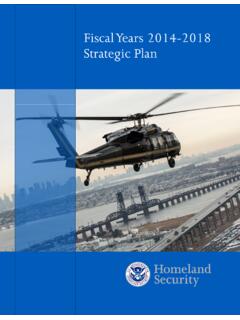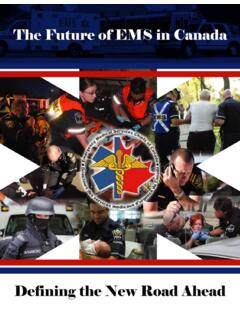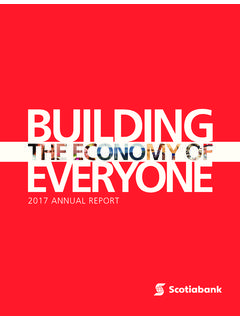Transcription of Best Practices for Incorporating Social Media into ...
1 DHS Social Media Working Group for Emergency Services and Disaster Management 2 best Practices for Incorporating Social Media into Exercises Social Media Working Group for Emergency Services and Disaster Management and DHS S&T First Responders Group March 2017 DHS Social Media Working Group for Emergency Services and Disaster Management 2 TABLE OF CONTENTS EXECUTIVE SUMMARY .. 4 INTRODUCTION .. 4 PURPOSE .. 5 DEFINITIONS .. 6 Social Media AND EXERCISES .. 7 Primary Motivations and Objectives .. 8 Suggested Approach .. 8 Getting Started .. 12 Stakeholder Engagement .. 12 Planning Team and Simulation Cell .. 13 Data Management .. 14 Conducting an Assessment .. 14 Developing a Process.
2 15 Developing Content and Supporting Materials .. 16 Conducting the Exercise .. 18 Open Environment .. 18 Closed Environment .. 19 Risks Associated with Using Social Media in Exercises .. 20 Evaluating the Exercise .. 20 Quantitative Measures .. 21 Other Measures .. 22 After-Action Assessments .. 22 CHALLENGES ASSOCIATED WITH INTEGRATING Social Media INTO EXERCISES .. 23 Processes and People .. 23 Technical Challenges .. 23 Additional Considerations .. 24 AREAS OF FUTURE RESEARCH .. 25 CONCLUSION .. 29 Appendix A: Social Media Exercise Evaluation Guide Dichotomous (Yes/No) Example .. 30 Appendix B: Social Media Exercise Evaluation Guide - Five-level Likert Scale Example .. 32 Appendix C: Case Study: District of Columbia Homeland Security and Emergency Management Agency (DC HSEMA).
3 34 DHS Social Media Working Group for Emergency Services and Disaster Management 3 Appendix D: Case Study: Canada United States Enhanced Resiliency Experiment (CAUSE) Series .. 37 Appendix E: Case Study: Anchorage, Alaska Social Media Exercise .. 39 References .. 41 DHS Social Media Working Group for Emergency Services and Disaster Management 4 EXECUTIVE SUMMARY To institutionalize Social Media into all aspects of an agency s emergency preparedness, response and recovery operations, Social Media should be incorporated into exercises. Using Social Media in exercises helps prepare first responders for real-life events where the public increasingly uses Social Media to share and gather information.
4 Exercises provide an opportunity for first responder and public safety agencies to integrate unconventional information channels into an operational environment without burdening time-crunched responders. This report discusses how agencies and organizations can integrate Social Media into exercises, provides suggestions for the planning processes and methods for conducting the exercise and evaluation, and lists challenges associated with using Social Media in exercises, areas of future research and case study examples for agencies. INTRODUCTION Social Media a nd collaborative technologies have b ecome critical components of emergency preparedness, re sponse and recovery. From international response efforts after large-scale disasters to domestic response and recovery after events affecting the United States, many gover nment officials now turn to Social Media technologies to share information and connect with citi ze ns during all phases of a crisis.
5 Implementing these new technologies, however, requires that responding agencies adopt new communication strategies, policies and engagement methods. Recogni zing the need to a ddress these challenges, the Department of Homeland Security's (DHS) Science and Technology Di rectora te (S&T) established a Virtual Social Media Working Group (VSMWG) in 2010. After Public Law 114-80 was passed, the VSMWG was re-named as the Social Media Working Group for Emergency Services and Disaster Management (SMWGESDM). The mission of the SMWGESDM is to pr ovide recommendations to the emergency preparedness and response community on the s afe and sustainable use of Social Media t echnologies before, during and after emergencies.
6 The SMWGESDM is a subcommittee of the Homeland Security Science and Technology Advisory Committee (HSSTAC). The HSSTAC approved the recommendations contained in the report by consensus vote on January 6, 2017. Drawn fr om a cross-secti on of subject matter experts from federal, tribal, territorial, state and local responders from across the United States, SMWGESDM member s establish a nd collect best Practices and solutions that can be leveraged by public safety officials and responder s throughout the nation s emergency response c ommunity . Below is a list of agencies and organizations to which the SMWGESDM member s belong. DHS Social Media Working Group for Emergency Services and Disaster Management 5 SMWGESDM Member Agencies and Organizations as of March 2017 American Red Cross Colorado Department of Transportation, Office of Emergency Management City of Evanston [Illinois] Federal Emergency Management Agency (FEMA) George Mason University George Washington University Humanity Road Indianapolis [Indiana] Fire Department National Institutes of Health (NIH) New York City [New York] Department of Health and Mental Hygiene New York City [New York] Emergency Management Department United States Northern Command (NORTHCOM) Oregon Voluntary Organizations Active in Disaster (VOAD)
7 City of Palo Alto [CA] Police Department Sacramento County [California] Office of Emergency Services King County [Washington] Office of Emergency Management San Francisco [California] Department of Emergency Management City of St. Louis [MO] Emergency Management Agency (CEMA) Southern Marin [California] Fire District United States Geological Survey (USGS) University of Washington Office of Global Affairs Virginia Department of Emergency Management (VDEM) Washington County [A rkansas] Regional Ambulance Authority PURPOSE This report follows the SMWGESDM s last publication, From Concept to Reality: Operationalizing Social Media for Preparedness, Response and Recovery, which introduced and discussed how and why Social Media should be operationalized by public safety, including.
8 The need to integrate Social Media into all aspects of preparedness, response and recovery, to ensure its longevity; Social Media s role in decision-making and information sharing in emergency response; How to operationalize Social Media and for what purposes; Associated challenges and barriers; and Areas requiring further consideration, research and The purpose of this document is to: Discuss best Practices for consideration when integrating Social Media into exercises, including objectives for doing so ( , using Social Media for communications or leveraging information from Social Media to support operational decision-making); Discuss Social Media s role in exercise design; 1 DHS SMWGESDM.
9 From Concept to Reality: Operationalizing Social Media for Preparedness, Response and Recovery. April 2016. 4. DHS Social Media Working Group for Emergency Services and Disaster Management 6 Identify Social Media exercise planning elements in t he Homeland Security Exercise and Evaluation Program (HSEEP) Practices ; Address the need for the integration of Social Media into all aspects of preparedness, response and recovery, including exercises and training, to ensure operational implementation and longevity; and Discuss challenges associated with integrating Social Media into exercises and training, including policy, technical and procedural challenges. The SMWGESDM developed this document with input from the public safety community through monthly group meetings and discussions via a variety of communications channels.
10 I t is intended for use by all public safety disciplines and all types of agencies to better understand and utilize Social Media a nd other web-based tools without having to duplicate effort or spend undue resources searchi ng for examples, policy te mplates or guidance. Examples included in this document are not intended to serve as an all- incl usive list but rather to provide a brief listing of agencies that use Social Media f or public safety purposes. For more information on these topics and additional resources, please visit DHS First Responder Communities of P ractice. DEFINITIONS The terminology used to describe various aspects of web-related technologies varies in definition, depending on perspective, domain and discipline.
